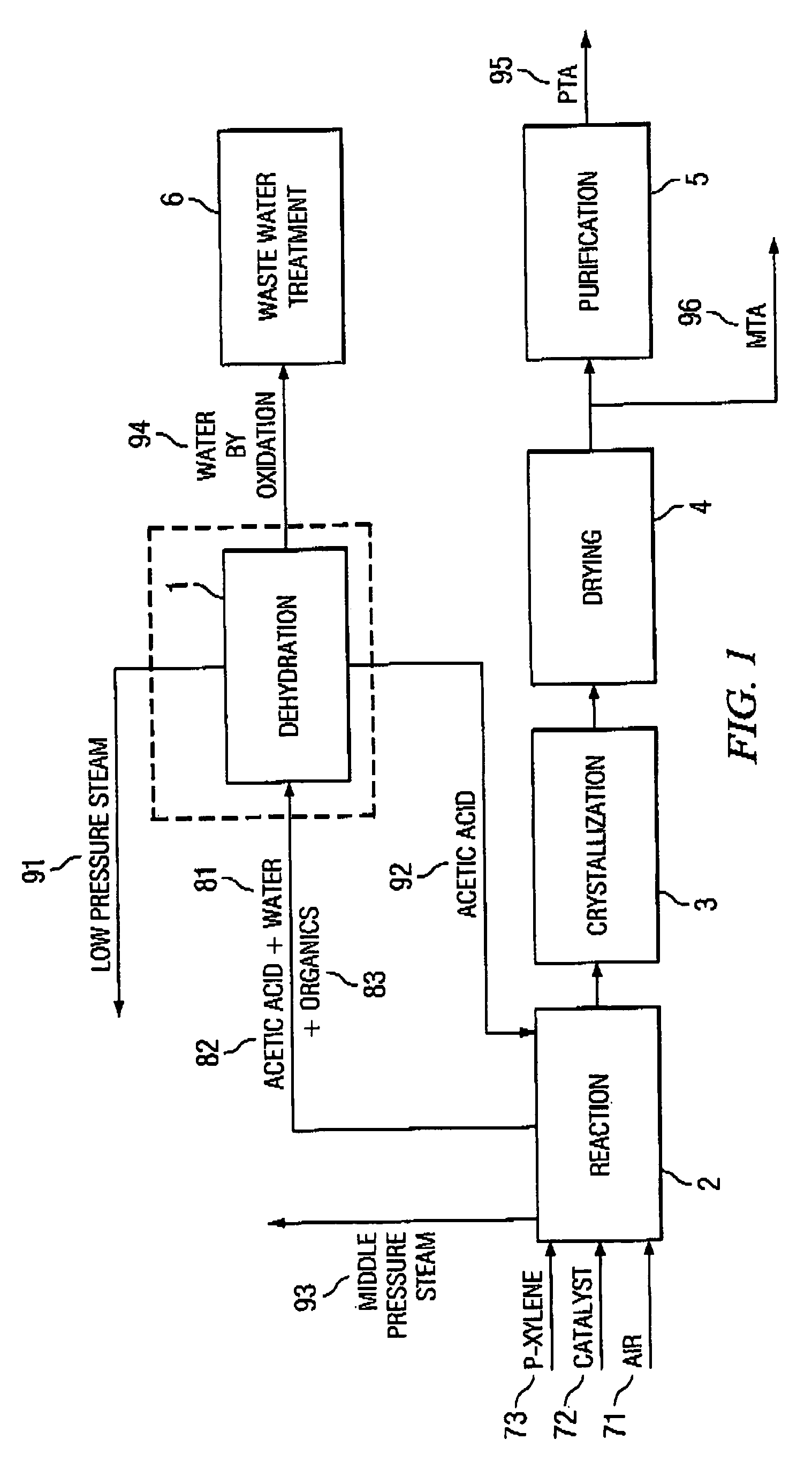System and method for acetic acid recovery during terephthalic acid production
a technology of terephthalic acid and recovery method, which is applied in the field of chemical processes, can solve the problems of high investment cost, low efficiency of acetic acid and water distillation, and use of conventional distillation, and achieve the effects of reducing the content of acetic acid, reducing the cost of additional steam consumption, and recovering energy
- Summary
- Abstract
- Description
- Claims
- Application Information
AI Technical Summary
Benefits of technology
Problems solved by technology
Method used
Image
Examples
example
[0065]In a typical 350,000 MTA terephthalic acid production plant, various acetic acid dehydration methods, namely, conventional distillation, azeotropic distillation at ambient operating pressure and the invention are compared. The typical design and operating benefits of the various methods are summarized in the table below:
[0066]
AzeotropicConventionalDistillationInventionInventiondistillation(Prior Art)(case 1)(case 2)EntrainernoneIso-ButylN-ButylN-ButylusedAcetateAcetate &Acetate &Iso-ButylIso-ButylAcetateAcetatePTA350,000350,000350,000350,000ProductionTypical No. of trays in90707090Dehydration ColumnPressure of Steam 6 and 1.5 6 and 1.5 6 and 1.5 6 and 1.5generated fromReaction Section(kg / cm2 abs.)Middle pressure steam60424236(6 kg / cm2 abs.)consumption inDehydration Section (T / hr)Pressure of Steam0.6–0.7none0.6–2.006–2.0generated fromDehydration Section(kg / cm2 abs.)Amount of Steam52none3834generated from theDehydration section (T / hr)Typical Acetic Acid7000300300300conc. to ...
PUM
| Property | Measurement | Unit |
|---|---|---|
| concentration | aaaaa | aaaaa |
| pressure | aaaaa | aaaaa |
| boiling point | aaaaa | aaaaa |
Abstract
Description
Claims
Application Information
 Login to View More
Login to View More - R&D
- Intellectual Property
- Life Sciences
- Materials
- Tech Scout
- Unparalleled Data Quality
- Higher Quality Content
- 60% Fewer Hallucinations
Browse by: Latest US Patents, China's latest patents, Technical Efficacy Thesaurus, Application Domain, Technology Topic, Popular Technical Reports.
© 2025 PatSnap. All rights reserved.Legal|Privacy policy|Modern Slavery Act Transparency Statement|Sitemap|About US| Contact US: help@patsnap.com



